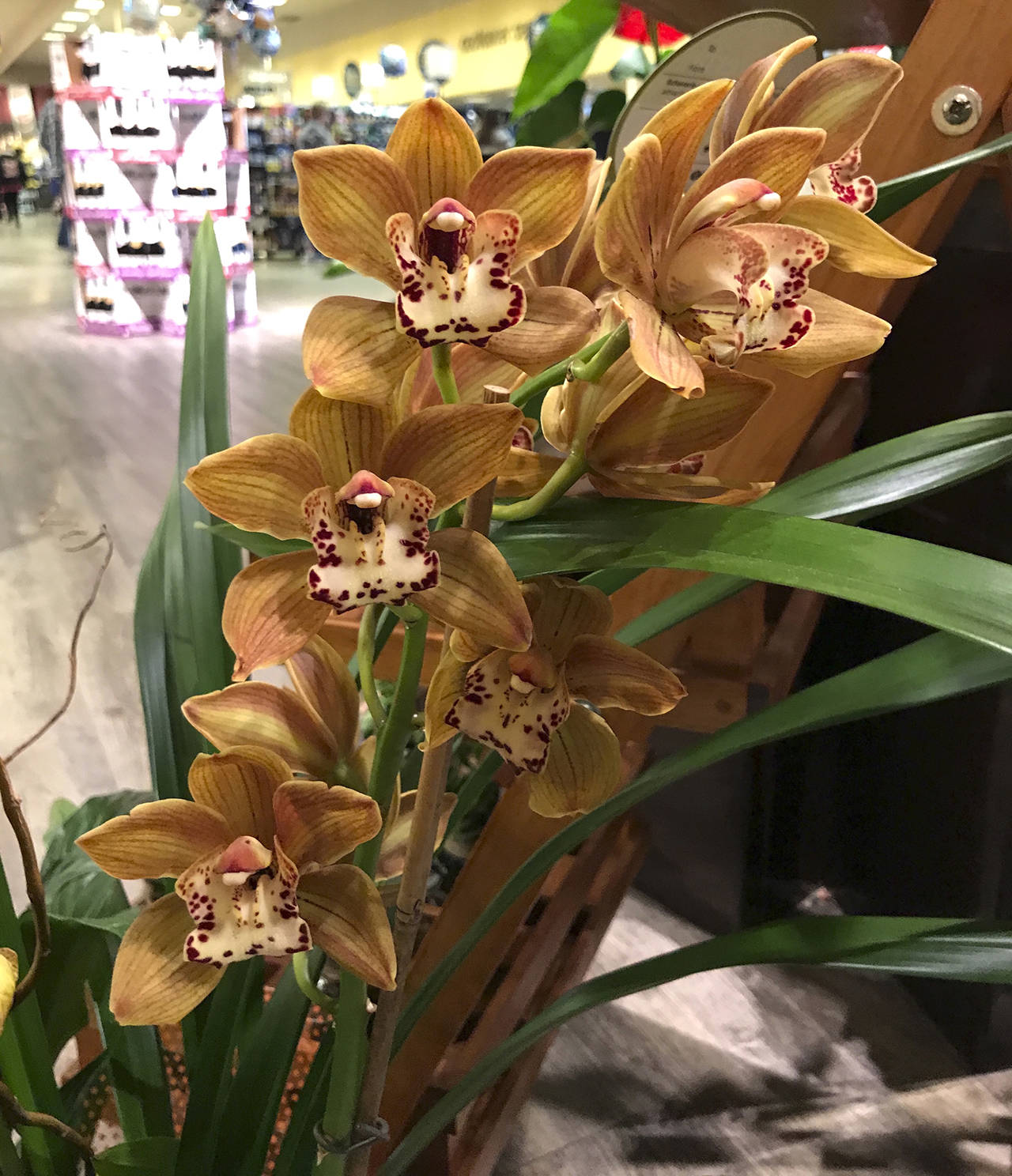By Dauna Koval
WSU Master Gardener
Once, orchids were thought to be temperamental, tricky to raise and difficult to acquire. As you can see from grocery-store floral departments, things have changed. The indoor gardener with a windowsill, a little knowledge and consistency can be rewarded with an exotic and long-lasting floral display.
The Orchidae family contains the largest number of flowering species known — more than 35,000 wild species. Many look more like grasses and have flowers so small you need a specialist to point them out. And they don’t all grow in hot, humid regions. Many are native to the Olympic Peninsula, preferring the cool coastal climate.
Today most of the flashier indoor hybrids are grown in labs by tissue culture, where growers can select a variety of colors, shapes and sizes — and, most recently, for ease of growth and care. We can see their success by visiting any grocery store, which carries preselected plants for our homes.
Orchids are categorized as either epiphytic or terrestrial, according to where they grow. Epiphytic varieties grow up in the forest canopy, attached to trees. When potted, they are planted in bark for support. Terrestrial varieties grow in the forest floor and are potted in a finer ground bark with peat added. Both have roots that need air to absorb water and nutrients. Neither is parasitic, drawing no nutrients from trees or plants that support them.
Give indoor orchids, including the roots, lots of air circulation, but keep them out of drafts. Water with tepid tapwater in the morning so the plant medium is thoroughly moistened, but leave no fluid in the pot. Clay pots with normal drainage are best, since they allow the water to evaporate (unlike plastic or glazed pots). Orchid pots with holes in the sides are excellent, but not necessary.
Orchids are heavy nitrogen feeders, so a 30-10-10 formula (30 percent nitrogen, 10 percent phosphorus and 10 percent potassium) once a month is recommended for most of the year. I have better luck feeding mine once a week using a quarter- or half-strength solution. I feed them on the same day each week, so I tend not to forget that way. As buds are forming and while in bloom, you can bump up the phosphorus, which encourages bloom. 10-30-20 is a good suggestion.
The two most common species of orchids widely available are the epiphytic Phalaenopsis and the terrestrial Cymbidium. Follow the above directions for growing both, but the growing medium, light, temperature and humidity needs differ enough that they will not thrive if kept together.
Phalaenopsis (fayl-eh-NOP-sis), sometimes called moth orchids, are the least particular about growing conditions and were the first to become widely available. They prefer temperatures of 75 to 85 degrees during the day, dropping to 60 to 65 degrees at night. They need more humidity than we are used to, 50 to 60 percent (about like a bathroom during a bath). Placing them on a tray of pebbles in water is better than misting, which can leave droplets at the base of leaves. Water two to three times a week. Place in a north- or east-facing window, with dappled or indirect light. Keep out of full sun to prevent scorched leaves.
Cymbidium (sim-BID-ee-um) is the most common flower used in orchid corsages. These are cooler and dryer growing. They prefer daytime temperatures from 70 to 80 degrees but, for best flowering, need night temperatures to drop to 50 to 60 degrees. Water once a week and keep humidity low at 30 to 40 percent. Provide as much light as possible in south- or west-facing windows, but shade from a hot midday sun.
For $20 to $30 at grocery stores, you can get a beautiful, healthy plant. The smaller the plant, the more sensitive it is to growing conditions, so begin with larger ones. With consistent care, you should be able to keep your orchid in bloom from 10 weeks to four months and even hope for a rebloom!
Dauna Koval is a Master Gardener, Class of 2016. She lives half-time in Ocean Shores and half-time in Renton. She has been growing orchids in her greenhouse window since 1999.


